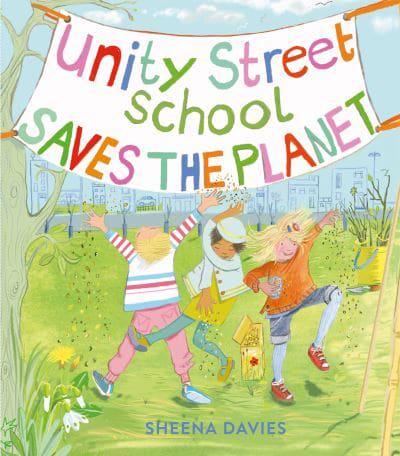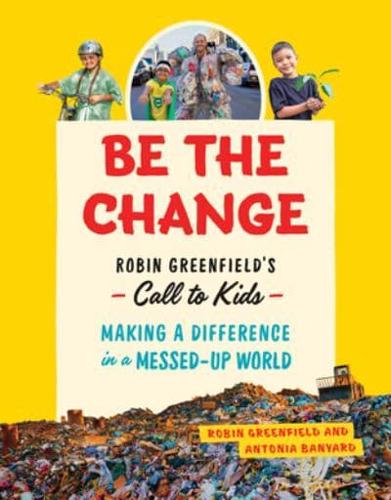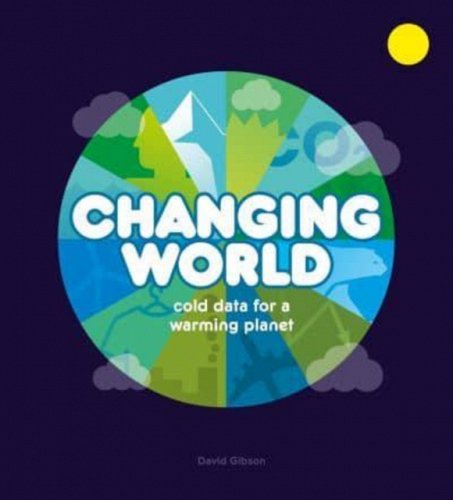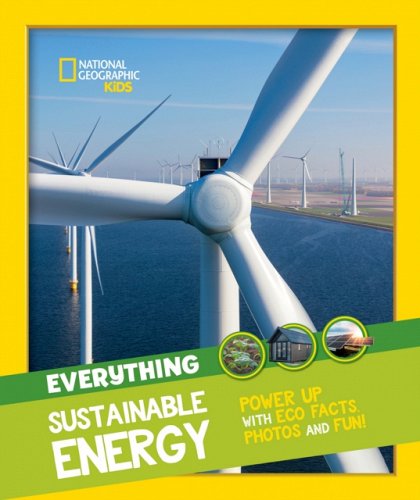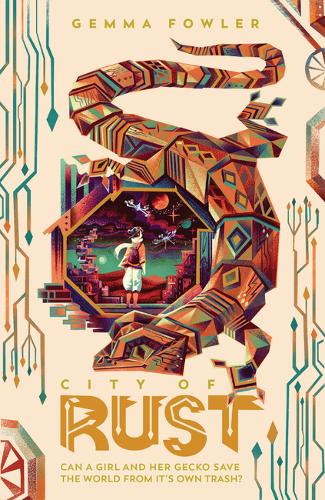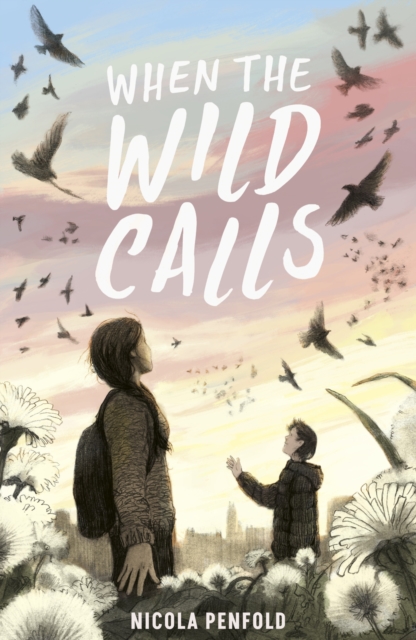Environment, climate change and eco topic books for EYFS, KS1, KS2 and KS3. These books will help teachers who are looking for high-quality texts to support and teach topics involving COP26, global warming and world climate change. This list includes fiction and nonfiction texts, picture books and real-life stories of ecology, conservation, preservation, sustainability, saving the planet, protecting the environment and biological threats by writers including Jess French, Shaun Tan, Emma Shevah, Zillah Bethell, Karen Swann, Gemma Fowler, Jackie Morris and Piers Torday.
Environment, climate change and eco topic books for EYFS, KS1, KS2 and KS3 – our recommended titles
Unity Street School Saves the Planet by Sheena Davies
When pupils at Unity Street School return from a climate-change talk, they’re determined to create their own wildlife haven. With a bit of help from the caretaker – and occasional nudges from visiting experts – they turn some forgotten ground into a buzzing patch of wildflowers, beans and hedgerows. Author and Cambridge-based illustrator Sheena Davies clearly knows how to inspire younger readers, quietly weaving practical conservation tips into a story that’s both creative and practical. It’s ideal for reading to EYFS in outdoor settings!
Footprint by Phil Cummings
Embark on a magical and thought-provoking journey through nature’s wonders in this lyrical hardback picture book by Phil Cummings. With stunning illustrations by Sally Soweol Han, 5-10-year-olds will be moved to think about the environment and the importance of conservation. Through beautiful prose and mesmerising artwork, Footprint will inspire both children and adults to appreciate the beauty of the world around them and take mindful steps to protect it. It’s an outstanding book which deserves to be in every primary school library.
Where Can We Go?: A Tale of Four Bears by Dai Yun and Igor Oleynikov
When Papa Bear tells his family there is no longer enough food to eat and they have to move, the four bears begin a difficult journey to search for a new home. Struggling to adapt to very different new locations, they find new hope from books and television and head south. Where Can We Go? is ideal for reading and sharing with KS1 and LKS2 classes and discussing the themes of family unity, refugees and immigration and the effects of climate change.
Small Steps, Big Change by Annemarie Cool
Annemarie Cool’s empowering hardback picture book for 5-8-year-olds offers 14 practical tips inspired by the United Nations Sustainable Development Goals. With colourful iconic characters such as Curiosity Hero, Water Hero, and Sharing Hero, it encourages environmental responsibility through simple actions such as loving the oceans, saving energy, reducing plastic use and being kind. Educational and accessible, it will encourage a sense of responsibility and global citizenship in young readers. Highly recommended for KS1.
Rubbish? Don’t Throw It Away! by Linda Newbery & Katie Rewse
Combining a brightly illustrated narrative with a series of tips and resource ideas, children in 3+ will be inspired by the raft of creative ideas for making unwanted rubbish into castles, puppets, masks, mobiles and more. With diverse characters and accessible short chunks of dialogue, this hardback is perfect to read and share in EYFS settings or at home. Packed with imaginative and meaningful upcycling fun, ‘Rubbish?: Don’t Throw It Away!’ is a joyful antidote to waste and leftovers.
Our Planet: The One Place We All Call Home by Matt Whyman and Richard Jones
Richard Jones’ gorgeous graphics interspersed with outstanding photography combine to create a glorious visual exposition of the natural world. Children will lose themselves in jungles, seas, lakes, forests, oceans and frozen worlds. Written to inspire with relentless positivity, this book will help promote deeper learning and individual reading amongst eco-conscious children in upper KS2 and KS3.
Be the Change by Robin Greenfield and Antonia Banyard
Be the Change inspires kids to live more sustainably, with practical tips on waste, food systems, and water conservation. Written by activist Robin Greenfield, it mixes personal stories with examples of extreme actions he’s taken, encouraging young readers to make meaningful changes in their lives. With vibrant visuals and motivating steps, the book helps kids see how small actions can lead to a greener world. It’s all about empowering the next generation to be eco-conscious change-makers.
Changing World: Cold data for a warming planet by David Gibson
Climate change is a topic that can be complicated for children and young adults to understand. But this uniquely engaging collection of pictograms facts, statistics, graphs and pertinent nuggets of information makes everything clear. It’s an ideal resource to help illustrate essay points, form arguments in debates, and use for independent projects and research in years 5 to 8.
Water – Protect Freshwater to Save Life on Earth by Catherine Barr
This fascinating and groundbreaking non-fiction book looks at how freshwater affects life, the climate, and our long term survival. With captivating detail and illustrations, interesting fact boxes and clear and concise information and explanation, this hardback sends a strong and positive environmental message. It’s a highly engaging book that children can pore over for days.
Everything Sustainable Energy by National Geographic Kids
Covering energy from the sky, energy from the ground, energy from the water, smart energy and how energy relates to climate change, this bright and engaging non-fiction book couldn’t be more relevant. There’s a particularly impressive interactive section at the back of the book. With eye-catching photography and impressive detail, Everything Sustainable Energy is perfect for KS2 classrooms and libraries.
Turtle Bay by Saviour Pirotta and Nilesh Mistry
Taro and Yuko discover how important it is to conserve the environment and protect loggerhead sea turtles, inspired by the old and wise Jiro-San. In this timely new edition of the classic picture book for older children by Saviour Pirotta, the atmospheric and detailed narrative illustrations are a joy to share. Turtle Boy is a beautiful book to read to and discuss with lower KS2 classes.
The Happy Hedgerow by Elena Mannion and Erin Brown
Old Oak lives an idyllic life watching over harmony in the fields, wildlife and landscape. But when a farmer moves in to uproot the hedgerow, the equilibrium is threatened. Told from the point of view of plants, animals and birds, children are encouraged to feel their emotions and empathise with their plight. A gorgeous picture book that will help to inspire creative artwork and writing in KS1 and lower KS2 lessons, The Happy Hedgerow is highly recommended for primary environment and nature topics.
The Robber Raccoon by Lou Kuenzler
At first glance, Rosie Racoon seems to be a nefarious thief, but as the mystery is revealed, it turns out she has a much bigger plan involving recycling. The larger than life characters leap from the page making this picture book perfect to share with younger children and EYFS classes. In particular, the wonderful expressions, onomatopoeia and rhyming text make this a playful text to read aloud with voices. We particularly liked the glamorous moose and sniffing sniffer dogs, and after reading this, don’t be surprised if your child searches toy shops for a cheeky plush toy racoon.
Song of the River by Gill Lewis
This environmental story with short chapters is accessible – with a reading age of 8 – and compelling. Can Cari find a way to save the landscape, prevent flooding and bring back the beavers? Not just a story, but a call to action – this is a rousing tale to inspire young people to think about conservation and the equilibrium of the natural environment. With emotive and debate-worthy themes, this story is ideal for guided reading groups in upper KS2.
What a Wonderful World by Leisa Stewart-Sharpe and Lydia Hill
This wonderfully illustrated non-fiction hardback details the lives and exploits of 35 ‘Earth Shakers’ – people who have worked to improve animal rights and environmental and ecological awareness. Including the biographical histories of a diverse range of figures such as Yola Mgogwana, Mina Guli, Priti Sakha, Felix Finkbeiner and John Muir, there’s a compelling mix of life stories, history, science and geography. With intricate and mesmerising illustrations by Lydia Hill, ‘What a Wonderful World’ will make a cracking addition to KS2 classroom libraries and is an ideal impetus to spark ideas for independent projects.
Milly Cow Gives Milk by Deborah Chancellor and Julia Groves
This narrative non-fiction picture book shows nursery aged readers Milly the Cow, where she lives, and how her milk goes from the farm to the supermarket. A useful book to discuss when teaching children about food and where it comes from.
The Uprising – The Mapmakers in Cruxia by Eirlys Hunter
When a family of mapmakers sets out to search for their father, they find themselves in Cruxia, a fantastical land of corporate greed and exploitation. With plenty of dialogue, interesting character names and a constant frisson of adventure, this book is a good class reader choice for years 5&6 classes in KS2. For teachers, there are plenty of opportunities to develop creative writing ideas and geography linked topic work on the subject of maps, mapping and protecting the environment.
How To Save the World with a Chicken and an Egg by Emma Shevah
Featuring extrovert Ivy, who has a unique way of communicating with the natural world, and Nathaniel, a boy with a singular and uncanny ability to retain facts about living things, this fascinating eco-mystery is an absorbing read that will appeal to more advanced readers in upper KS2. The interesting narration is an ideal starting point for discussing and hot seating characters with different perspectives on life.
The Tale of the Whale by Karen Swann and Padmacandra
When a young girl meets a whale, she is taken on a miraculous journey through pristine paradise waters of endless treasures, but also plastic pollution and discarded waste. A beautifully illustrated and sensitive story that will inspire younger children to consider the environment. If your EYFS class is planning a beach or litter clean, this is a great book to read and share.
The Journey Home by Frann Preston-Gannon
When the ice starts to melt, the Polar Bear sets out on a quest across the ocean, up rivers, over land and back to the sea, picking up new and displaced friends along the way. Exploring why and how each creature lost its habitat, this classic picture book is a useful resource to introduce children to the importance of conservation. Beautifully realised with an eye-catching use of perspective, bold images and clever typography, The Journey Home is a wonderful picture book for both KS1 and KS2 children. The story is ideal to provoke ideas for creative writing and environmental topic work and this anniversary edition features project ideas that will be useful for home learning.
City of Rust by Gemma Fowler
This exciting eco-adventure sees Railey and her sidekick robo-Gecko Atti not only trying to win a futuristic worldwide drone race but also save the world from an impending explosion of rubbish and refuse. Fast-moving and easy to read, this middle-grade novel will appeal to environmentally aware and STEM engaged pupils in years 5&6.
Eco Warriors by Campbell Books
A fun, chunky board book to inspire younger readers that includes vibrant and colourful life stories of key environmental and Eco-aware heroes and heroines such as Greta Thunberg, John Muir, Isatou Ceesay and David Attenborough. With push and pull sliders and lots of interactivity, this book is ideal to read with your preschool-age child.
Song of the Dolphin Boy by Elizabeth Laird
A thought-provoking story for 9-11 years olds about Finn – ostracised by other children in the village – who campaigns for the pollution endangering offshore dolphins to be stopped. His campaigning leads to unexpected allies. This refreshing middle-grade novel is ideal to help Year 6 children discuss and formulate ideas about protecting their local environment.
The Rabbits by Shaun Tan
This clever, and at times dark, picture book presents a fictional history of a world taken over by rabbits. Seeing the rabbits build roads, grow in population and change the landscape will make children in KS2 think about man’s impact on the environment and how many of the perspectives put forward by politicians and industry are biased against the natural world. An ideal book to spark artwork ideas and philosophical debate.
Lottie Loves Nature: Bird Alert by Jane Clarke
When inquisitive Lottie spots some sparrows nesting in the garden, her joy is short-lived when a baby falls from into the path of Precious, next door’s cat. Springing into action – Lottie hatches a plan to save the nest. This short chapter book – part of a series for first independent readers – is a subtle introduction to respecting and protecting wildlife and will appeal to children in years 2-4 who are interested in science.
Mia Makes a Meadow by Rachel Lawston and Beatriz Castro
With eye-catching and intricate naturalistic illustrations, Mia shows us how an urban space can be transformed into a haven of nature. With fabulous bees, insects, flowers and birds, there’s plenty to intrigue younger readers. This picture book would be an ideal text to inspire children tackling a “World Around Us ” topic in KS1. Highly recommended, this is a beautiful picture book for the classroom.
The Lost Words by Jackie Morris and Robert MacFarlane
This groundbreaking large format hardback contains a collection of spectacularly-illustrated poems, spells, and wordplay that will captivate children interested in the natural world. With rich language, figurative language and pages spilling with imagination, this book is highly recommended as a literacy text to inspire lessons in KS1 and KS2. There is an extensive collection of free resources for schools and home learning on the publisher’s website. https://www.thelostwords.org/resources/
Dear Greenpeace by Simon James
Written as a series of letters between a young girl and Greenpeace, the worldwide environmental organisation, this picture book explores why a whale cannot be expected to live long term in a pond. Examining themes of captivity, species endangerment and conservation, this text will appeal to readers in KS1 and will be useful for children in KS2 studying man’s impact on the environment in geography and letter writing in literacy.
When the Wild Calls by Nicola Penfold
Juniper and her brother Bear navigate a world where ‘the Wild’ introduces them to wonders, but dangers lurk in a city ravaged by disease. Juniper’s determination to rescue loved ones, combined with Etienne’s quest for freedom, creates a compelling ecological adventure that’s perfect for fans of dystopian tales such as The Last Wild. Penfold’s skilful storytelling offers a powerful and thought-provoking narrative with themes of courage and resilience that will resonate with 9-12-year-olds.
Terra Electrica: The Guardians of the North by Antonia Maxwell
In a gripping post-melt Arctic, The Guardians of the North follows 12-year-old Mani as she confronts a world ravaged by a deadly force called Terra Electrica that eats electricity and threatens civilisation. Suitable for children aged 10-14 it’s filled with pertinent themes of resilience, environmental awareness, and survival, making it perfect for children and early teens who care deeply about dark ecological issues and the dangers of climate change. Read our full review.
The Extraordinary Colours of Auden Dare by Zillah Bethell
An atmospheric story that slowly builds into a gripping page-turner. Set in a world fighting over dwindling water supplies, the reader is introduced to Auden – an 11-year-old who is colour blind. But when he moves to a new town and meets a fascinating new friend, his life begins to change. Can he finish the work his professor uncle started and solve the planet’s problems? An ideal class reader for upper KS2.
The Last Tree by Ingrid Chabbert
When a young boy who has always lived in a concrete jungle discovers something growing, neither he nor his friend knows what it is. Little do they realise that it may be the last ever tree. Can they save it from being covered by an apartment block? With evocative illustrations, this is a great picture book to read and discuss in KS1.
The Great Kapok Tree by Lynne Cherry
This engaging modern fable follows a man who works all day with an axe to cut down a tree in the Amazon rainforest. When he falls asleep, exhausted, the forest community speaks to him and try and make him change his mind and protect their environment. A great book to inspire hot seating discussions in year 2 and year 3 and ideas for cross-curricular geography and artwork projects.
Leaf by Sandra Dieckmann
This spellbinding and fantastical picture book sees a polar bear mysteriously appear in a forest, prompting surprise and fear among the animals that live there. When the bear begins to collect the fallen leaves, suspicion and mistrust develop, but no one can predict the polar bear’s amazing plan. This inspirational book is ideal to spark discussion about climate change with younger children in EYFS.
One Plastic Bag by Miranda Paul
When Isatou Ceesay saw festering plastic bags polluting the roadside in her Gambian neighbourhood, she decided to take action. The plastic was killing animals that tried to eat it, harbouring vermin and disease and causing dangerous smoke when it caught fire. So she set about finding a way to recycle all the plastic. This story will inspire younger readers in EYFS and KS1 to believe that their actions really can make a difference.
The Last Wild by Piers Torday
The first of an engrossing animal adventure trilogy for 9-12-year-olds. When Kester discovers that he can talk to pigeons, he realises nothing will ever be the same again. Soon he finds he might be the only hope for stopping the spread of an apocalyptic global virus. An ideal class reader for year 5 or year 6.
Floodland by Marcus Sedgwick
In a not to distant alternative reality, Norwich is an island and England is a region of water, bogs and mud. Can heroine Zoe escape the rising tide of danger and find her parents before all is lost? A startling vision of what the realities of climate change might bring, this novel will provoke heated debate in KS3 book groups.
What A Waste: Rubbish, Recycling, and Protecting our Planet by Jess French
An exciting and informative fact-based non-fiction book by well-known conservationist Jess French, this book will help lower KS2 children explore what happens to household waste, how refuse can be recycled, and how the oceans are being polluted. An ideal year 3/4 topic book for the classroom library.
Island by Nicky Singer
A riveting KS3 thriller about a teenaged Cameron who begins to realise not everything his Arctic research-based mother is telling him is true, and that the ice melts could be perilous for Inuit survival if things aren’t fixed soon. This is a great novel to discuss in year 7 and 8 book clubs and an ideal story to explore empathy and different perspectives.
This Book is Not Rubbish by Isabel Thomas
This collection of 50 ways to become an eco-warrior is perfect for inspiring home learning projects, presentations and individual, class, year group or school challenges. Aimed at upper KS2 aged children, this is an accessible, practical and useful book that is full of ideas. Highly recommended.
World Without Fish by Mark Kurlansky
This lavishly illustrated book for older children is both thought-provoking and inspirational. Seamlessly linking the food chain, commercial fishing and exploitation, evolution, climate change, activism and politics, this short and poignant book blends nonfiction and fiction to make complex ideas easy for upper KS2 and KS3 children to grasp and form their own opinions about. A must-have book for school libraries.
A Planet Full of Plastic: and how you can help by Neal Layton
A highly practical book that explains why plastic is dangerous, this book aimed at EYFS and KS1 aged children also offers teachers and parents lots of ideas to show children how they can contribute to helping reduce pollution and safeguard their futures.
The Tin Forest by Helen Ward
This award-winning lyrical picture book combines spectacular and immersive illustrations with a moral tale about the value of keeping our world free of human refuse and waste and enjoying the natural world. Equally suitable for reading to younger children, and discussing with older pupils in KS2 to provoke story ideas or creative artwork for display.
The Blue Giant by Katie Cottle
When a giant living creature appears on a wave, Meera and her mother are stunned when it asks them to help save the sea from plastic pollution. They agree and embark on an unforgettable story to improve the marine environment. This award-winning picture book is ideal to read and share with children in key stage one.
If Sharks Disappeared by Lily Williams
This picture book – suitable for EYFS and KS1 children – deftly explains why the loss of one species has a domino effect on the rest of an ecosystem. Ideal to read and discuss, this vibrantly illustrated hardback with double-page spreads is perfect for inspiring wall displays and pupil’s artwork.
National Trust: How to Help a Hedgehog and Protect a Polar Bear by Jess French
This colourful and informative non-fiction guide will introduce KS2 children to the concept of endangered species. On each highly illustrated double paged spread, there’s a detailed depiction of each habitat and practical suggestions on what action you can take to help the animals. Highly recommended for home learning.
Environment, climate change and eco topic resources
- BBC Bitesize offers a series of videos for KS1 classes about protecting the environment as part of the citizenship curriculum.
- The Worldwide Fund for Nature has produced an excellent set of free downloads to help schools raise awareness and involvement in protecting the environment.
- Kids Against Plastic offers a series of free child-centred resources to show children what they can do to make a positive impact in the fight against plastic pollution.
- For pupils in KS3 years 7&8, BBC Bitesize has a range of short films to show the effects of environmental and climate change from a geography perspective and a science perspective.
- The Geographical Association offers a great free download aimed at KS3, but with elements suitable for more advanced KS2, about protecting the environment.
- Canary Wharf has created an excellent resource for teaching KS3 children about inner-city environments.
- Surfers Against Sewage has a free download offering schools and parents practical advice about organising a beach clean.
- And the Irish Marine Institute has produced complete lesson plans to underpin a school beach clean, aimed at 10-12-year-olds.
If you liked this environment and climate change list, you might also enjoy these additional books and our books for topics collection.
